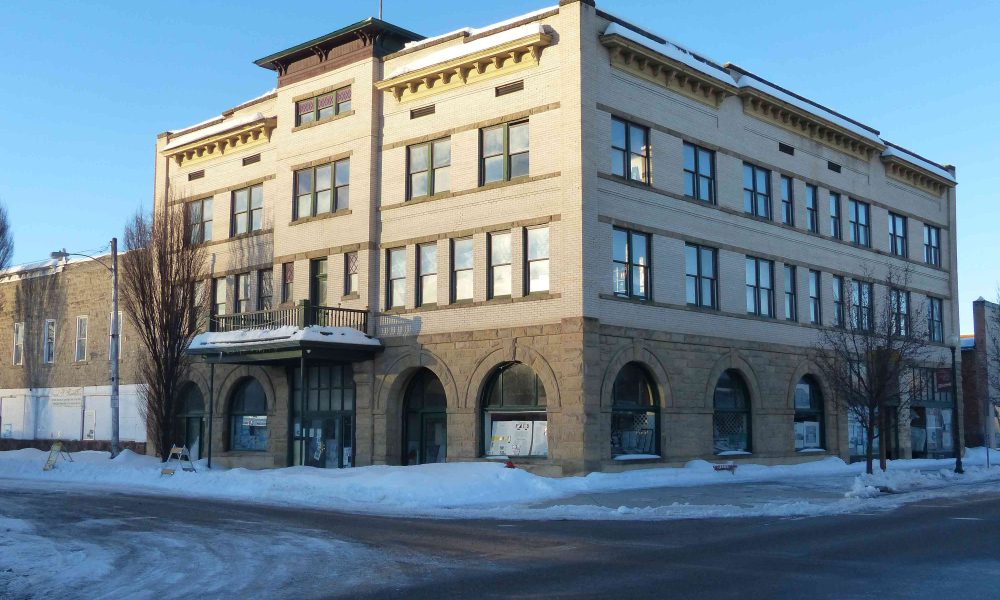

 The Vale Hotel, opened in 1908, sits at the heart of downtown Vale – dark and empty. (Malheur Enterprise/Les Zaitz)
The Vale Hotel, opened in 1908, sits at the heart of downtown Vale – dark and empty. (Malheur Enterprise/Les Zaitz)When the IOOF Building collapsed recently, a lot of eyes turned across the street and wondered about the Vale Hotel. Was it, too, at risk by nature’s onslaught? The community centerpiece has survived so far, but it brings into focus other questions about the fate of this building.
The hotel was built the same time, in 1908, and with the same architect as the IOOF Building. The hotel is now owned by Michael McLaughlin, Vale’s mayor. The Drexel H Foundation, formed 16 years ago, has been taking the lead on restoring the hotel. Progress, though, has been slow and the foundation and the mayor haven’t been very open with the public about their intentions.
That matters because the foundation has long sought public help to restore this privately-owned building. Late last year, the foundation said it wanted to sell bricks as a fundraiser, with money going to restoration. A state nonprofit, Restore Oregon, recently declared the building one of the most important threatened historic structures in Oregon and has vowed to help save it.
In recent weeks, the Malheur Enterprise has tried to reach the mayor about the plans. He doesn’t respond to calls or to emails. Similarly, the Enterprise has repeatedly posed questions to the foundation both in telephone messages and email messages. The response so far? Silence. That should trouble the community as much as it troubles us.
The ambition to restore the hotel to its grandeur is noble. Such restorations have proven to be an economic boon in other communities. They make downtowns come alive. They draw in other investments and other businesses. They create jobs. They create a thriving heart in communities that might otherwise shrivel.
But reaching that ambition requires thoughtful, sound plans.
For the Vale Hotel, for instance, what exactly needs to be done to put the building into use? The foundation obtained an architect’s review that apparently addresses that, but the foundation so far hasn’t been willing to make that public. That study was done with grant funds – public money.
The work list frames the next question: What is the price tag? A half million dollars would be a stretch if the community is expected to help. A restoration project costing, say, $5 million would require hard questions about whether any public participation or investment is justified, whether through donations, grants or tax incentives.
Overlooked in most restoration work is the cost once the building is up and running. Getting the lights to come back on is great. But how is the power bill going to be paid? Too often, community projects are done from heart and soul and not often enough with a sharp accountant’s pencil. A plan to cover operating costs and planning for maintenance is essential. What are those costs for a restored Vale Hotel and what would be the source of that money?
Finally, who benefits? This is a privately-owned building. Private owners typically are expected to take care of their own property. If this is going to be a partnership between the owners, the foundation, and the community, then the community deserves a much bigger stake in decisions. The community should expect significant benefits from such a huge undertaking. Jobs? Other investments? Cultural attractions?
The hotel, for now, sits largely dark, empty and cold. That could change, and for the betterment of Vale and the community. But no more public money – not a dollar in grants, donations or government funds – should go into this project until the community has seen, accepted, and supported a plan to restore and operate the Vale Hotel. – LZ




